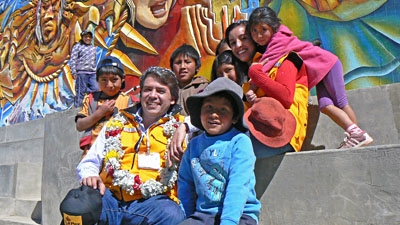Esperanza Choquehuanca is over 60 and has lived in the 9 de Abril neighborhood on the outskirts of La Paz since she was little. “We used to have to wash clothes in the stream or the wells; women and girls had to go to the river to use the bathroom,” she said.
But Esperanza’s life started looking up after the "Barrios y Comunidades de Verdad" (Real Neighborhoods and Communities) program was launched. The program is part of the World Bank’s Urban Infrastructure Project in Bolivia.
Of all the changes in the neighborhood, Esperanza has most benefited from the improvements in basic services. That is not surprising given that she must wash clothes and ensure that her children and grandchildren are clean.
“Now we all have our own bathrooms with a shower with hot water as well as our own laundry areas,” says Esperanza, visibly moved, but with the self-confidence that a better life gives her.
She is also happy with the street lighting, the sports areas, the community house where neighbors organize a variety of activities, and especially with the paved roads.
Neighborhood Board President Emilio Flores agrees with Esperanza that not having to circulate on improvised paths any longer is one of the most important improvements.
”We lived among dirt and dust; with paved roads, we no longer have to send our children to school in filthy shoes. These infrastructure projects have improved our quality of life,” he says.
The star program
Real Neighborhoods and Communities is “the municipality’s star program,” according to La Paz Mayor Luis Revilla.
The program targets resources to comprehensively address the main problems of poor neighborhoods and rural communities of La Paz Department.
The program began in 2005; seven years later, it has benefited 45,000 people living in poor urban neighborhoods. Of La Paz’s 600 neighborhoods, 300 require project interventions.
To date, infrastructure works have been completed in 55 of these neighborhoods. By 2013, the project expects to have renewed 100 neighborhoods.
“If, over the next 15 years, we can intervene in the 300 neighborhoods that need overall improvements, we will transform the hillsides of La Paz, producing a significant social impact,” said Mayor Revilla.


